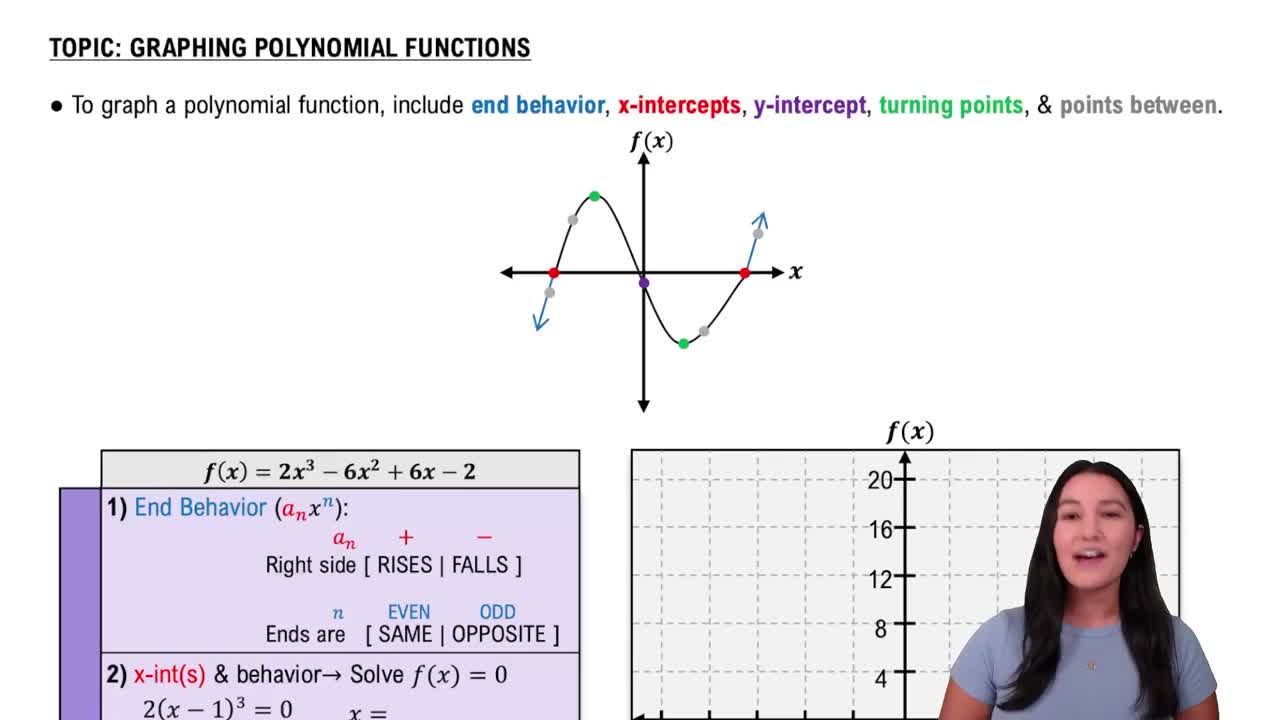Here are the essential concepts you must grasp in order to answer the question correctly.
Polynomial Functions
A polynomial function is a mathematical expression involving a sum of powers in one or more variables multiplied by coefficients. The general form of a polynomial in one variable is f(x) = a_n*x^n + a_(n-1)*x^(n-1) + ... + a_1*x + a_0, where 'n' is a non-negative integer and 'a_n' are constants. Understanding the degree and leading coefficient of the polynomial is crucial for graphing and analyzing its behavior.
Recommended video:
Introduction to Polynomial Functions
Factoring Polynomials
Factoring polynomials involves rewriting the polynomial as a product of simpler polynomials or linear factors. This process is essential for finding the roots of the polynomial, which are the x-values where the function equals zero. Techniques such as grouping, using the quadratic formula, or applying the Rational Root Theorem can be employed to factor polynomials effectively.
Recommended video:
Introduction to Factoring Polynomials
Graphing Polynomial Functions
Graphing polynomial functions requires understanding their key features, such as intercepts, end behavior, and turning points. The roots found from factoring indicate where the graph crosses the x-axis, while the degree of the polynomial determines the number of turning points. Analyzing these characteristics helps in sketching an accurate graph of the polynomial function.
Recommended video:
Graphing Polynomial Functions
 Verified step by step guidance
Verified step by step guidance Verified video answer for a similar problem:
Verified video answer for a similar problem:



 6:04m
6:04m